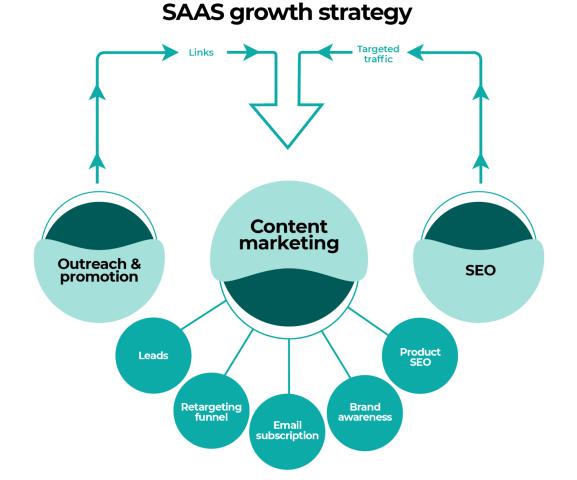In the fast-paced business world, the success of a product
launch hinges on a solid Go-to-Market (GTM)
strategy. Yet, even the most innovative products can fail to take off
if the GTM execution falters. From misaligned messaging to poor market
understanding, mistakes can derail what could have been a successful
introduction. By learning from the failures of others, businesses can avoid
common missteps and design a GTM plan that maximizes their chance of success.
In this tech article, we’ll explore
key Go-to-Market mistakes to avoid, with a focus on leveraging a strong Martech strategy.
1. Ignoring Market Research
A critical step in any Go-to-Market plan is thorough market
research. Companies often rush into product launches, assuming they know what
their customers want, only to find out they were wrong. Failing to understand
the nuances of the market and customer pain points can lead to misaligned
product features and messaging.
For instance, if you’re launching a new SaaS platform aimed
at small businesses, understanding the competitive landscape and the real needs
of your target audience is crucial. Does your product solve an actual problem
they face? Are there competitors already offering a similar solution at a lower
price point?
Comprehensive market research ensures that your product not
only fits the market but also distinguishes itself. Skipping this step can lead
to wasted resources and missed opportunities to capture early adopters.
2. Lack of Clear Targeting and Segmentation
In today’s market, it’s essential to be laser-focused on who
your product is for. A broad approach may seem appealing, but a
"one-size-fits-all" strategy is often a recipe for disaster. Without
clear customer segmentation, it becomes difficult to tailor your messaging,
sales strategy, and product features effectively.
Take Apple, for example. The company’s success in launching
new products lies in its ability to segment and understand different customer
personas. Apple doesn’t just market to “tech lovers” — it crafts specific
messages for business professionals, designers, and everyday users.
Understanding these segments allows the company to create tailored campaigns
that resonate with each group.
Martech strategy plays a key role here, allowing
brands to use marketing automation, customer data platforms (CDPs), and other
tools to personalize outreach and ensure the right messages reach the right
audiences.
3. Misalignment Between Sales and Marketing Teams
One of the most common Go-to-Market mistakes is poor
alignment between the sales and marketing departments. These teams must work
hand-in-hand for a successful launch, but often, they operate in silos.
Miscommunication can lead to a mismatch between the product's value proposition
and how it’s being sold or marketed.
For example, marketing might push the product’s cutting-edge
features, while the sales team may focus on price competitiveness. This
inconsistency confuses potential buyers and dilutes your brand messaging.
The solution is early and frequent collaboration between
sales and marketing. Both teams need to be involved in shaping the GTM strategy
from the start, ensuring everyone is on the same page regarding the target
audience, product benefits, and the competitive landscape.
4. Underestimating the Power of Martech
Incorporating Martech strategy (marketing
technology) is no longer optional; it’s critical for executing a scalable and
efficient Go-to-Market plan. The tools and technologies used to automate
marketing, analyze data, and personalize customer experiences can make or break
a launch.
When Slack launched, it wasn’t just the product’s ease of
use that helped it take off — it was Slack’s strategic use of marketing
automation and targeted advertising. By leveraging customer data, they
identified their most valuable user personas and tailored their messaging
accordingly.
Ignoring Martech tools like CRM systems, marketing
automation platforms, and analytics dashboards can lead to missed opportunities
to optimize campaigns, streamline communication, and nurture leads. Your GTM
strategy should not only focus on traditional marketing tactics but also
leverage modern Martech solutions to stay competitive.
5. Failing to Test and Iterate
An effective Go-to-Market strategy should be treated as a
living, evolving entity. Too often, companies believe their GTM plan is set in
stone once it’s established. The truth is, there will always be unexpected
challenges or insights that arise during the launch process. Failing to test
different approaches or iterate based on feedback can lead to wasted efforts
and unsuccessful campaigns.
A notable example is Google Glass. Despite the product's
innovative potential, Google rushed its launch without proper testing in
real-world scenarios. Feedback showed the product was seen as intrusive and
overpriced, and these issues were not addressed in time, leading to the
eventual discontinuation of Google Glass.
Testing your message, pricing, and sales approaches on small
segments of your audience before a full-scale launch allows you to identify and
correct issues early on. Utilizing A/B testing, pilot programs, and customer
feedback can provide crucial data to refine your GTM strategy for maximum
impact.
6. Overlooking Post-Launch Support
The launch of your product isn’t the end of your
Go-to-Market journey — it’s just the beginning. Failing to plan for post-launch
activities such as customer onboarding, technical support, and product updates
can result in poor customer retention and negative word-of-mouth.
Providing a smooth customer experience post-launch is
essential to maintaining momentum. Successful companies like HubSpot and Zoom
prioritize ongoing customer education and support through webinars, detailed
FAQs, and dedicated support teams. Building a customer success team and keeping
lines of communication open ensures long-term engagement and satisfaction.
7. Inflexible Budgeting
Budget mismanagement can quickly doom a Go-to-Market
strategy. Many companies underestimate the resources required for a successful
launch, allocating too much budget toward product development and not enough
toward marketing, sales enablement, or customer acquisition.
Instead of front-loading the budget into development,
allocate resources for ongoing marketing campaigns, customer retention
strategies, and product enhancements. Your budget needs to be flexible to
account for unforeseen shifts in the market or increased competition.
Conclusion
Building a successful Go-to-Market strategy requires
more than a great product — it requires strategic planning, collaboration, and
adaptability. Avoiding these common mistakes can significantly improve your
chances of a successful product launch. By focusing on market research, sales
and marketing alignment, a strong Martech strategy, and continuous
testing, companies can position themselves for long-term success and avoid the
pitfalls that have tripped up many failed launches.
The key takeaway? Stay agile, data-driven, and
customer-focused throughout the entire GTM process.















